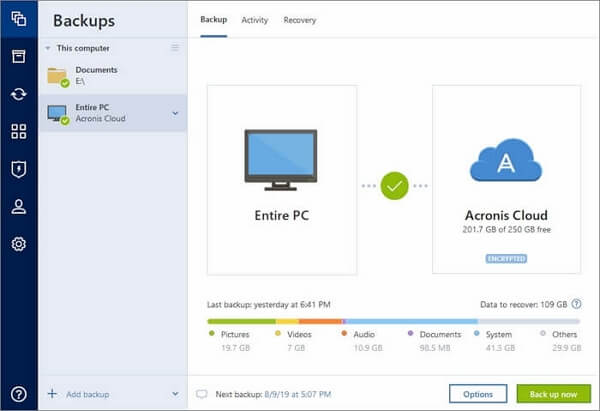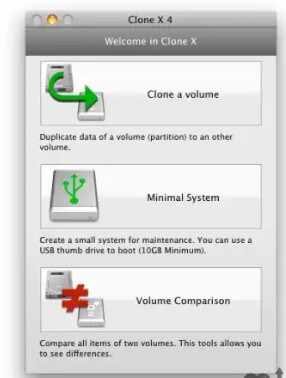

- #DISK CLONING SOFTWARE FOR MAC MAC OS#
- #DISK CLONING SOFTWARE FOR MAC MANUAL#
- #DISK CLONING SOFTWARE FOR MAC FREE#
- #DISK CLONING SOFTWARE FOR MAC MAC#
In the Disk Utility app on your Mac, select a disk, volume, or connected device in the sidebar.Ĭhoose File > New Image, then choose “Image from. You can then restore that disk image to another volume.
#DISK CLONING SOFTWARE FOR MAC FREE#
For example, if a USB device or volume is 80 GB with 10 GB of data, the disk image will be 80 GB in size and include data and free space. You can create a disk image that includes the data and free space on a physical disk or connected device, such as a USB device.
#DISK CLONING SOFTWARE FOR MAC MANUAL#
In the Finder, copy your files to the mounted disk image, then eject it.įor more information about disk image types, see the manual (man) page for hdiutil.

cdr file extension.ĭisk Utility creates the disk image file where you saved it in the Finder and mounts its disk icon on your desktop and in the Finder sidebar. dmg file extension.ĭVD/CD master: Changes the size of the image to 177 MB (CD 8 cm). Read/write disk image: Allows you to add files to the disk image after it’s created. Sparse disk image: Creates an expandable file that shrinks and grows as needed. Sparse bundle disk image: Same as a sparse disk image (below), but the directory data for the image is stored differently. To encrypt the disk image, click the Encryption pop-up menu, then choose an encryption option.Ĭlick the Partitions pop-up menu, then choose a partition layout.Ĭlick the Image Format pop-up menu, then choose an option:
#DISK CLONING SOFTWARE FOR MAC MAC#
If the disk image will be used with a Mac or Windows computer and is 32 GB or less, choose MS-DOS (FAT) if it’s over 32 GB, choose ExFAT.
#DISK CLONING SOFTWARE FOR MAC MAC OS#
If the disk image will be used with a Mac with macOS 10.12 or earlier, choose Mac OS Extended (Journaled) or Mac OS Extended (Case-sensitive, Journaled). If the disk image will be used with a Mac that has a solid state drive (SSD) and uses macOS 10.13 or later, choose APFS or APFS (Case-sensitive). In the Size field, enter a size for the disk image.Ĭlick the Format pop-up menu, then choose the format for the disk: This is the name that appears on your desktop and in the Finder sidebar, after you open the disk image. In the Name field, enter the name for the disk image. This is the name that appears in the Finder, where you save the disk image file before opening it. In the Disk Utility app on your Mac, choose File > New Image > Blank Image.Įnter a filename for the disk image, add tags if necessary, then choose where to save it. It is available for all existing purchasers of Reflect 8.Upgrade options are available are fully committed to our Japanese customers and will be announcing a local partner soon.Please contact us for more information existing customers, here is how you change language of Reflect Free will have to wait as Reflect 8 Free is not yet available.Reflect is now available in Japanese was originally published in Macrium Software on Medium, where people are continuing the conversation by highlighting and responding to this story.īackups and the Big Screen - when backups saved the day!īackups and the Big Screen - when backups saved the day!Here in the Northern.You can create an empty disk image, add data to it, then use it to create disks, CDs, or DVDs. I sat down with Macrium’s Technical Director, John Pendleton, to discuss how.


 0 kommentar(er)
0 kommentar(er)
